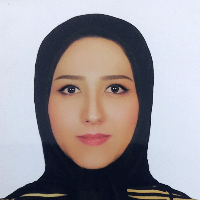Improving Proteome Coverage for Hs578T Breast Cancer Cell-Line due to Efficient Interfering Removal
Author(s):
Article Type:
Research/Original Article (دارای رتبه معتبر)
Abstract:
Background
In spite of the wide use, low proteome coverage and fuzzy patterns are the most important deterrents for the clinical applications of gel-based proteomic studies. So herein, we tried to increase the 2-dimentional proteome coverage of Hs578T breast cancer cells via investigating the efficacy of the three common techniques, usually used for interfering removal.Methods
Hs578T cells were incubated in a lysis solution to obtain raw cell extracts. Cellular soups of each extraction were then pooled, homogenized, and aliquoted to be further treated by three different protein-specific purification methods including acetone, acetone-methanol, and trichloroacetic acid (TCA)-acetone, each in triplicates. All the purified protein pellets were then dissolved in a standard rehydration buffer solution, loaded into the 17-cm immobilized pH gradient (IPG) strips, and separated according to their isoelectric points. Proteins were then separated once more according to their molecular weights in an OFarrell separation system. Finally, by the visualization of the protein spots on the 2-dimentional profiles, quality and quantity of these 2-dimentional proteome patterns were then analyzed using the ImageMaster software.Findings: The obtained proteome recovery yields and total protein counts for acetone, acetone-methanol, and trichloroacetic acid-acetone methods were 0.100 ± 0.001, 0.070 ± 0.002, and 0.120 ± 0.005 ng/cell, and 1299 ± 9, 1698 ± 14 and 1973 ± 17, respectively. The results represent data obtained from three independent experiments.
Conclusion
Trichloroacetic acid-acetone purification not only represented the highest recovery yield, suitable for expensive assays, but also showed the most suitable proteome coverage. So, the method is recommended for the comparative proteomic studies. However, the acetone-methanol procedure is more recommended for serological proteome analysis (SERPA); since it represents stronger protein spots which are more fitted to the immunoblotting procedure.Keywords:
Language:
Persian
Published:
Journal Of Isfahan Medical School, Volume:36 Issue: 471, 2018
Pages:
216 to 220
magiran.com/p1832877
دانلود و مطالعه متن این مقاله با یکی از روشهای زیر امکان پذیر است:
اشتراک شخصی
با عضویت و پرداخت آنلاین حق اشتراک یکساله به مبلغ 1,390,000ريال میتوانید 70 عنوان مطلب دانلود کنید!
اشتراک سازمانی
به کتابخانه دانشگاه یا محل کار خود پیشنهاد کنید تا اشتراک سازمانی این پایگاه را برای دسترسی نامحدود همه کاربران به متن مطالب تهیه نمایند!
توجه!
- حق عضویت دریافتی صرف حمایت از نشریات عضو و نگهداری، تکمیل و توسعه مگیران میشود.
- پرداخت حق اشتراک و دانلود مقالات اجازه بازنشر آن در سایر رسانههای چاپی و دیجیتال را به کاربر نمیدهد.
In order to view content subscription is required
Personal subscription
Subscribe magiran.com for 70 € euros via PayPal and download 70 articles during a year.
Organization subscription
Please contact us to subscribe your university or library for unlimited access!


